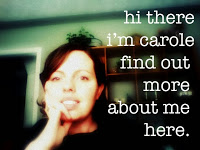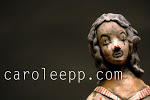guest post: “Look what I found.” Thoughts about pottery by Steve S. Saroff
into the school library to be alone during lunch recess. The most
private nook was the science section. The bottom shelf had the biggest
books. One of them was a mineralogy book filled with photos of
crystals and diagrams of chemical changes brought on by heat and
annealing. There were explanations about oxidation and reduction.
There were instructions of how to make a flame blow-pipe to use with a
candle to do tests on minerals. There were photos of aiming the tip of
the hot flame at mineral streaks made on the back of a ceramic tile.
The photos showed how colors would be different depending on which part
of the flame – the blue oxidizing center or the orange glow of
reduction – touched the trace of minerals.
with no goal is no comfort, but aimed at the discovery of the
mysterious, with observations of matters great and small, solitude is
the cure for even the deepest sorrow. You can go out then come back and
say, “Look. See what I have found.” The right sort of solitude leads
to the best sort of company.
I made a mineral test
kit: A hand lens; A tile as a streak plate for scraping rocks; A
candle; A pack of matches; A thin copper tube pinched at one end to
just a pin hole; A vial and eyedropper of weak hydrochloric acid; A
quartz crystal and a few other minerals for the hardness test. A small
notebook. A pencil. A Swiss army knife. Then I began looking for
rocks, especially ones with colors and crystals. And I found them. And
I brought them back.
Rocks rapidly led to geology —
which is the study of time– which led to chemistry – which is the study
of mystery . Chemistry led to math, which could have been perfect
except that I needed to work and make money, so math then pulled me
into writing software for computers which led to starting businesses.
Business is a deep sorrow which has nothing to do with the way minute
streaks of minerals look when heated to 2,300 degrees in the absence,
or presence of oxygen. Copper will become black or green. Iron is a
rainbow if combined with just a hint of manganese and a smudge of
silicate. These are things you can bring back. These are things that
can be shared.
When I met the woman who would become my
first wife, one of her classes was a pottery class. I went with her
one evening to the big studio on campus. Students were working on their
final projects and dipping bisqued cups into buckets of grey goop. In
the corner of the room was a cabinet filled with bottles. A 50’ish man
was sitting near the cabinet reading a newspaper and smoking a
cigarette, and when I walked over to read the labels on the bottles, he
said hello and asked if I was one of his students. I told him no, but
told him I was the boyfriend of a student of his. He nodded, almost
went back to reading his paper, but instead asked that universal small
talk question of universities, “what are you studying?”
“Chemistry,” I said.
lowered his paper, looked at me. At that time, out of the 6,000
students on campus, there were only a few handfuls of chemistry majors.
He asked, “Really?” and we began to talk. We talked about clays and
their extra layers of bonded hydrates. We talked about bonding energy
and valance. We talked about the physics of heat, of enthalpy, of
photons and how all things glow, even when cold. Then he said, “Hey,
let me show you how to throw a pot.”
My second wife
also liked pottery. She and I bought a used kick wheel and set up in
our backyard of the small house we shared for a few years on Missoula
avenue. But I was so busy with trying to make money that I don’t think I
ever touched the clay. And we had no kiln, so I never touched the
chemistry either. And then that marriage ran out and the wheel rusted
in the rain.
pottery. It is the perfect solitude. When I sat at a wheel and thought
too hard, nothing worked. But when I became alone without thoughts, my
hands calmed me. I’ve never needed to make any cups or plates or bowls
– there is always something to drink or eat from – and I’ve never
needed art credits or a social purpose to define myself — but I have,
ever since I was ten, needed discovery and surprise. Pottery can be
that, and it is also has discoveries that can be shared. The “Hey,
look at what I found,” like the rocks I carried back from mountain
tops, rocks with fossils or metal crystals, rocks with mystery. Perfect
solitude brings people together because we can share what we have
learned alone.
re-learning how to throw porcelain. I spend hours just centering, and
most of what I have done ends up in the slip bucket.
emerging artist: Lydia Johnson
dedication, and sincerity, values quickly dissolving in today’s society.
We live in a world that tells us that we must have what our neighbors
have to be happy. Throwing is an escape from this voice.
Pots are
relatable and accessible to every human being. They are not esoteric.
These useful, everyday objects often create their own significance only
made possible by the thought of the maker. Every detail, from form, to
foot, to handle, breathes personality into an inanimate object. Even the
most subtle details give each new pot the opportunity to speak
differently; the chance to become more graceful, more charming, more
reserved.
I view each piece as a three dimensional canvas. My
surfaces are where memory, music, and emotion are visualized with the
stroke of a brush. Layers of vibrant colors, abstract shapes and active
lines live in an indecipherable yet familiar landscape. Within this land
exist ideas of human fragility and understanding. It reaches for
momentary glimmers of a better future.”
Call for artists: The 4th Ceramics Annual of America
Exhibition Dates: October 18-20 2013
fair spotlighting the quality and diversity of contemporary ceramics
from around the world including works from China, Korea, Mexico,
Australia and Italy. It is the only event of its kind in the United
States and the goal is to encourage the education and enrichment of the
public, cultivate a fertile art market, and foster dialog between
collectors and makers of ceramic sculpture.
Part of California’s continuing legacy of excellence and innovation in
ceramics, CAA is the largest exhibition and art fair that is entirely
focused on ceramic art in America and is modeled after the Ceramic
Biennials held in Europe, Korea, Japan and China. It provides a venue
for the top regional and international artists from working in the clay
medium to show their work to a broader audience of collectors.
CAA is organized by the California Ceramics Cooperative, a group of
invested regional ceramic artists, and will feature panel discussions,
lectures, tours as well as daily interactive art demonstrations all day
that will provide a greater understanding of the artistic process for
students and educators alike. Featured artist and instructor Kevin
Nierman, author of “The Kids ‘N’ Clay Ceramics Book,” will provide
“Artistic childcare” on Saturday and Sunday from 11-3.
This year, the city of San Francisco is partnering with CAA. The
exhibition will be held at the San Francisco Civic Center. CAA expects
high attendance with over 25,000 vistiors. This is an exciting time for
CAA, the Civic Center has not been used as an art venue since 1986.
From 1946 until the last years of the Arts Festivals in the mid-1980s,
the Arts Commission used budgeted monies from the City’s general fund to
purchase jury-selected work by contributing local artists. As a result,
the Civic Art Collection contains a number of early works by
influential artists, including Robert Arneson, Bruce Beasley and Viola
Frey. In 1978 an exhibit of Arts Festival acquisitions was held at the
Arts Commission’s gallery, followed in 1986 by a second showing in the
lobby of the TransAmerica Building, after which many of the objects were
incorporated into the Arts Commission’s interdepartmental loan program
for display in City offices. For many of the artworks included in The
Art of a City, this is the first time they have been publicly exhibited
in over twenty years.
Last years event was a huge success with over 10,000 people in
attendance. The museum quality exhibition included educational lectures
by curators such as Peter Selz and Phil Linhares and renowned artists
such as Jim Melchert. “The size and scale of such an exhibition and the
education opportunities, all under one roof, were extraordinary.”—Art
Historian, Peter Selz.
Exhibition Dates:
Friday: 4:30pm-6:30pm
Saturday: 9am-6:30pm
Sunday: 9am-6:30pm
Contact: Nancy Resler
Call for entry: 2013 Clunes Ceramic Award
Registration for the 2013 Clunes Ceramic Award is now open.
The Clunes Ceramic Award is open to all Australian ceramic artists
and all ceramic art forms are accepted, including mixed media works in
which the dominant medium
is ceramic.
Artworks submitted can be a single item or set.
View the Conditions of Entry
Complete the Entry Form



















